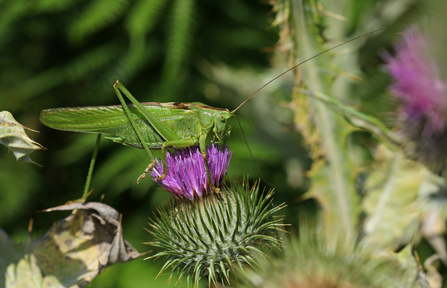Great green bush-crickets can grow up to 7cm in length, making them the largest cricket, and one of the largest insects, in the UK.
Although more usually found in the south and east, about 10 years ago a single great green bush-cricket was found in the far south of Worcestershire. Despite searching for it, experts have not been able to find any more in the county…until now.
In spring, a nymph was discovered in the very north of the county. It takes a minimum of two years to develop from an egg to an adult so this means that the egg must have been laid in 2023 or earlier. Staff from Worcestershire Wildlife Trust would like to know whether this means the species is present elsewhere in the county.
Wendy Carter from Worcestershire Wildlife Trust said “I’ve had the pleasure of seeing these crickets in Suffolk before, so the idea that they might be living right here in Worcestershire is very exciting.
“They particularly like hanging out in tall vegetation, from meadows and hedgerows to gardens and allotments.
“It’s so intriguing that one was found in the south of the county 10 years ago and now we have nymphs in the north of Worcestershire. Where else might they be?
“They’re unmistakeable; in size they’re more like a grasshopper or cricket that you might find if you’re abroad. This makes it much easier to know when you’ve found one and we’d love to hear from anyone who does.”

